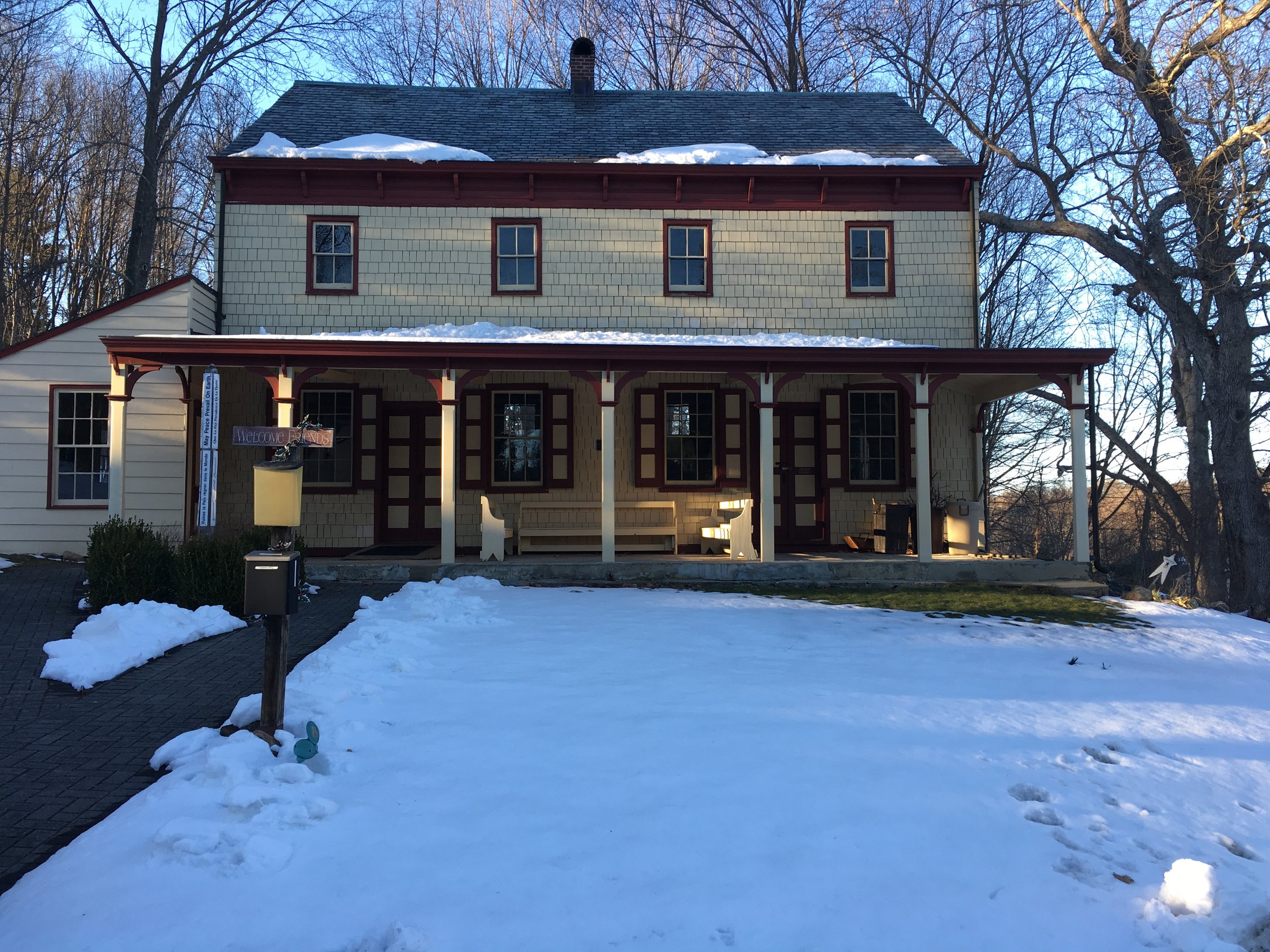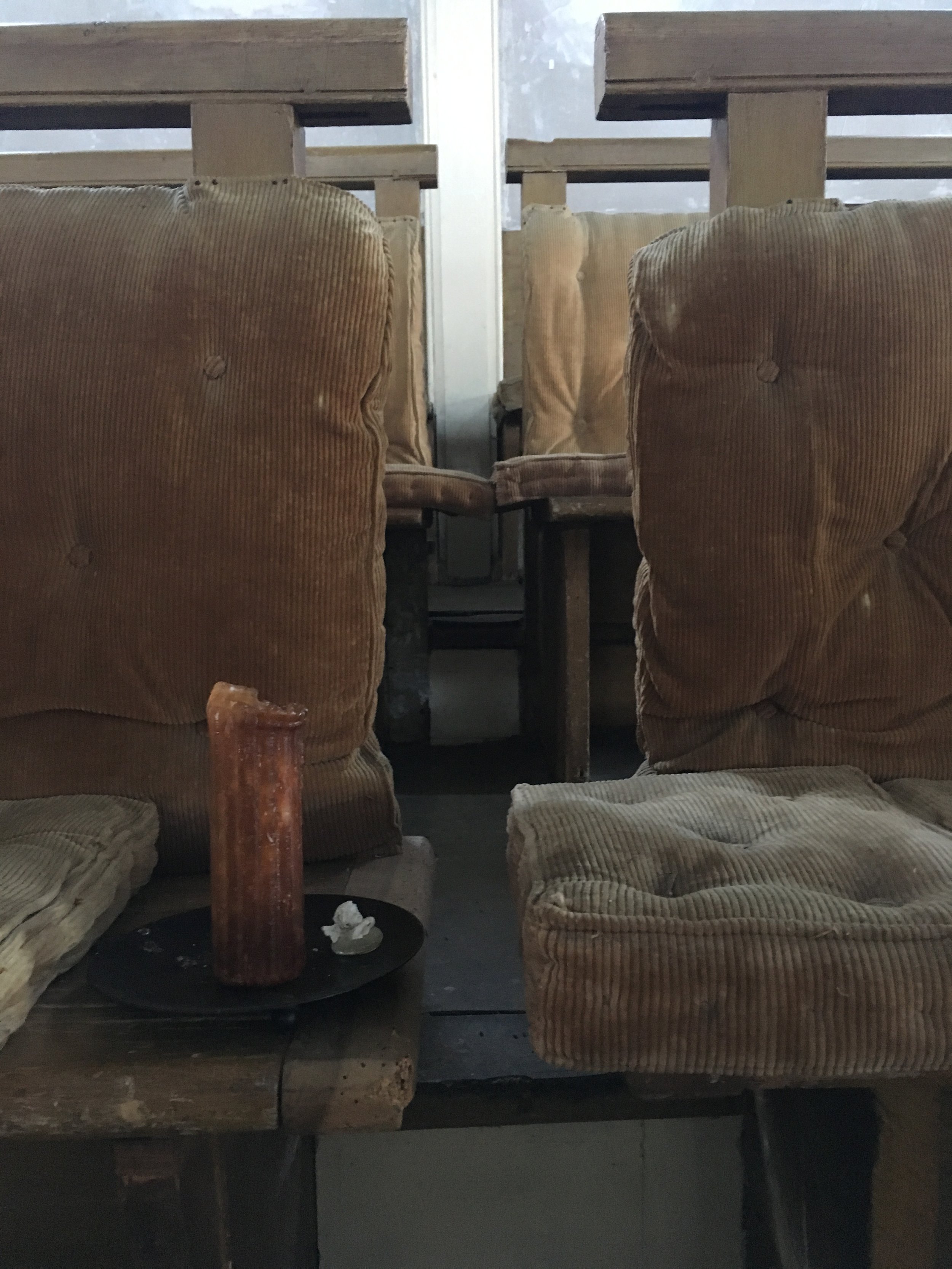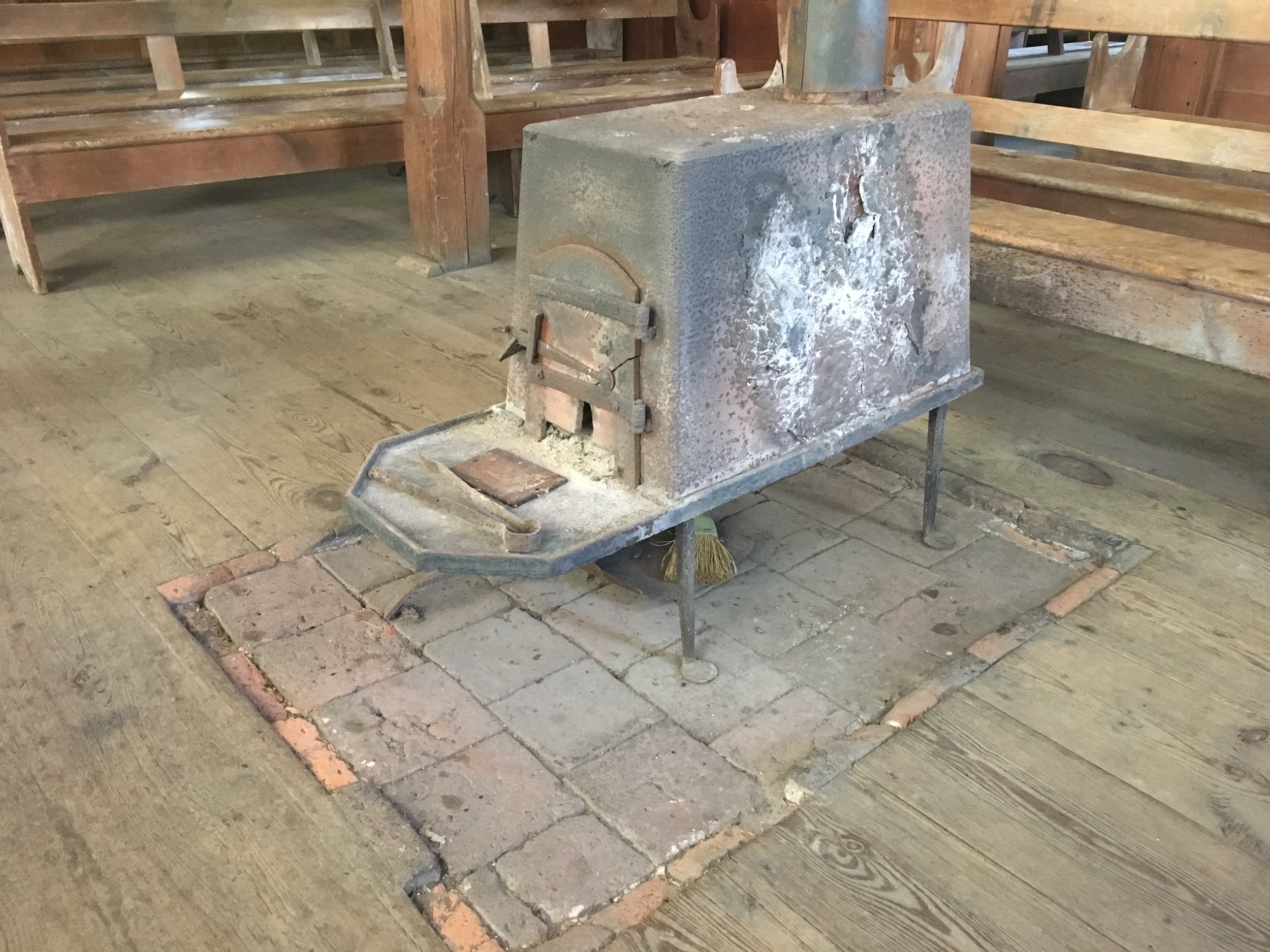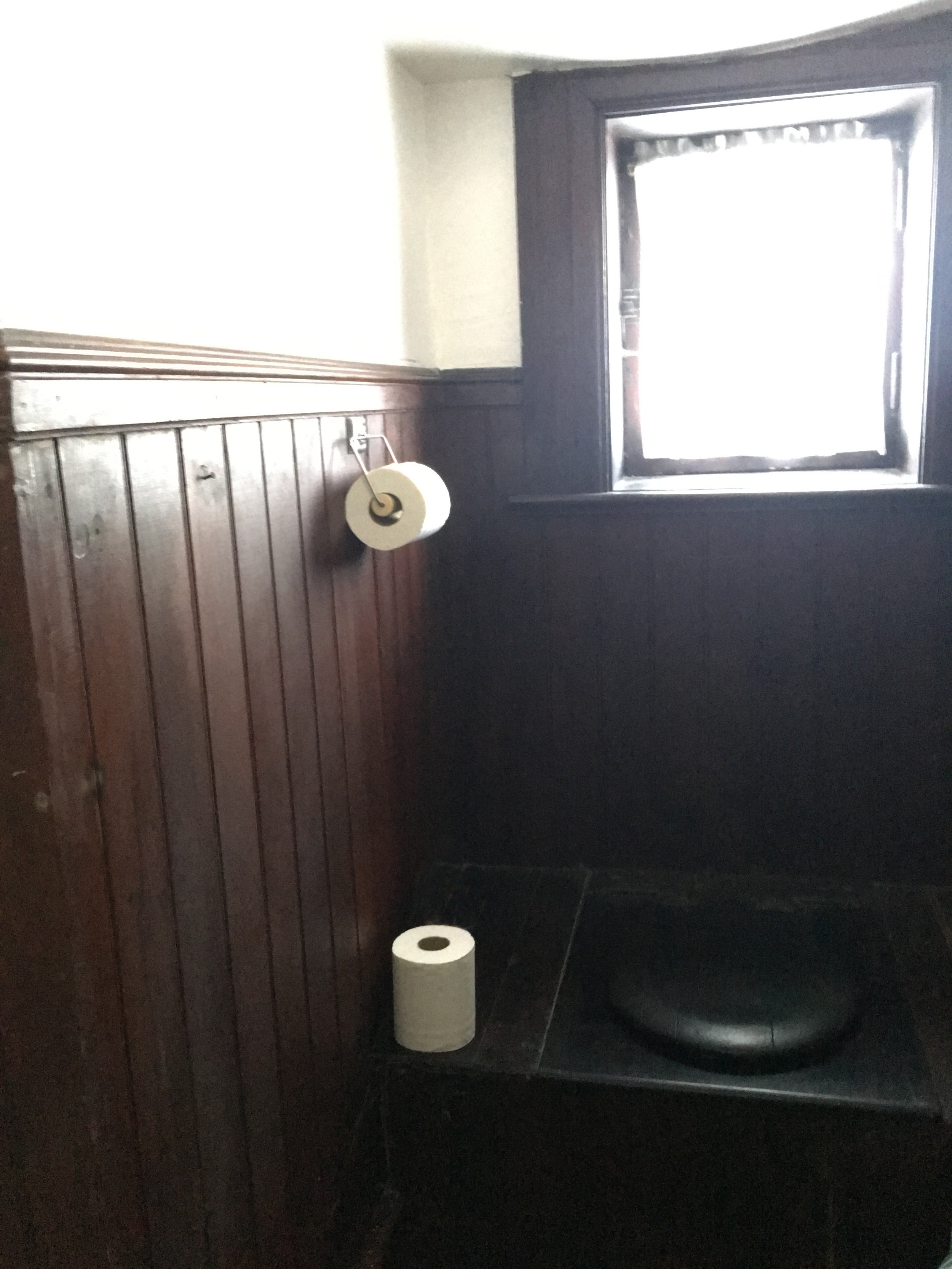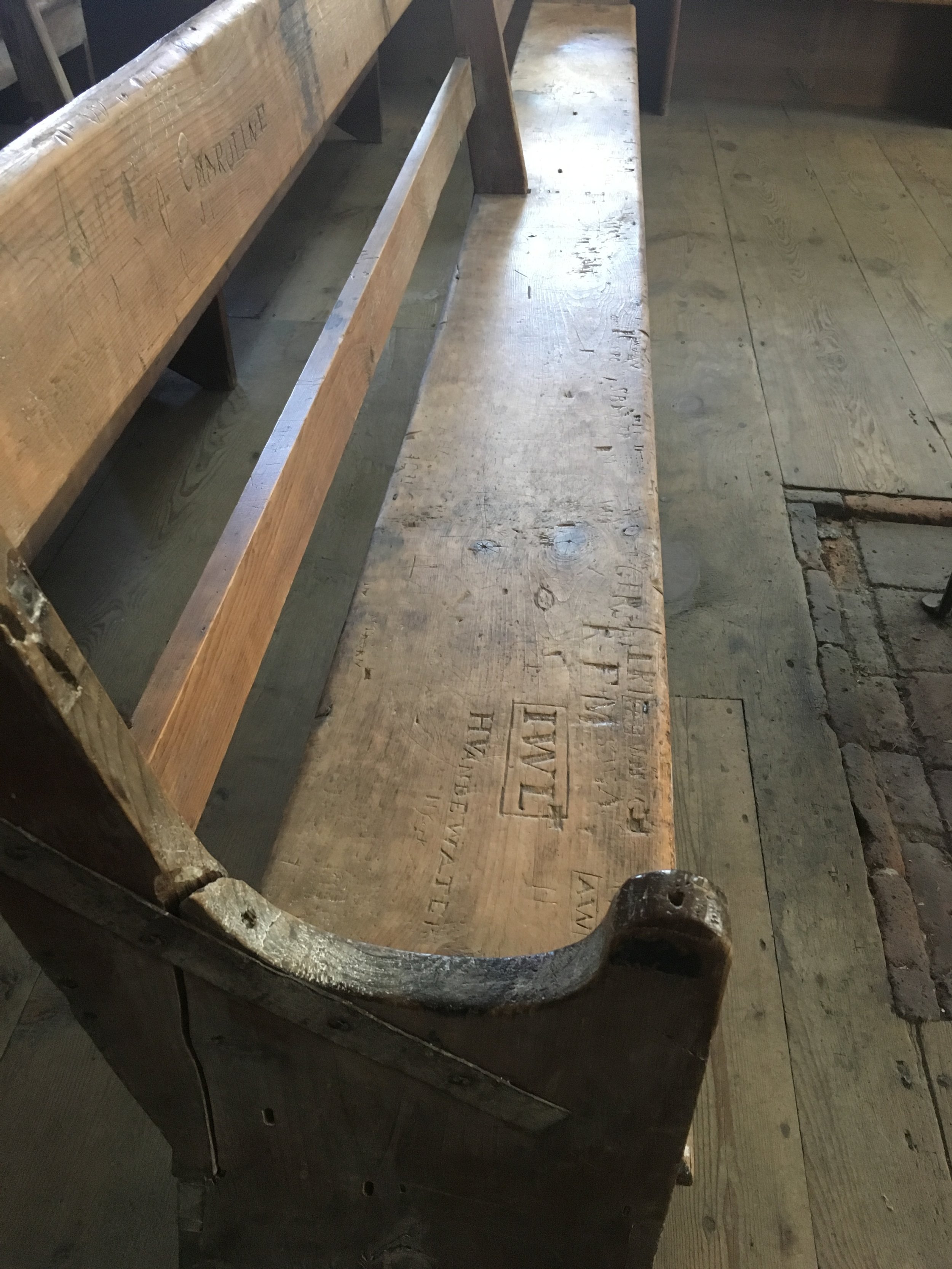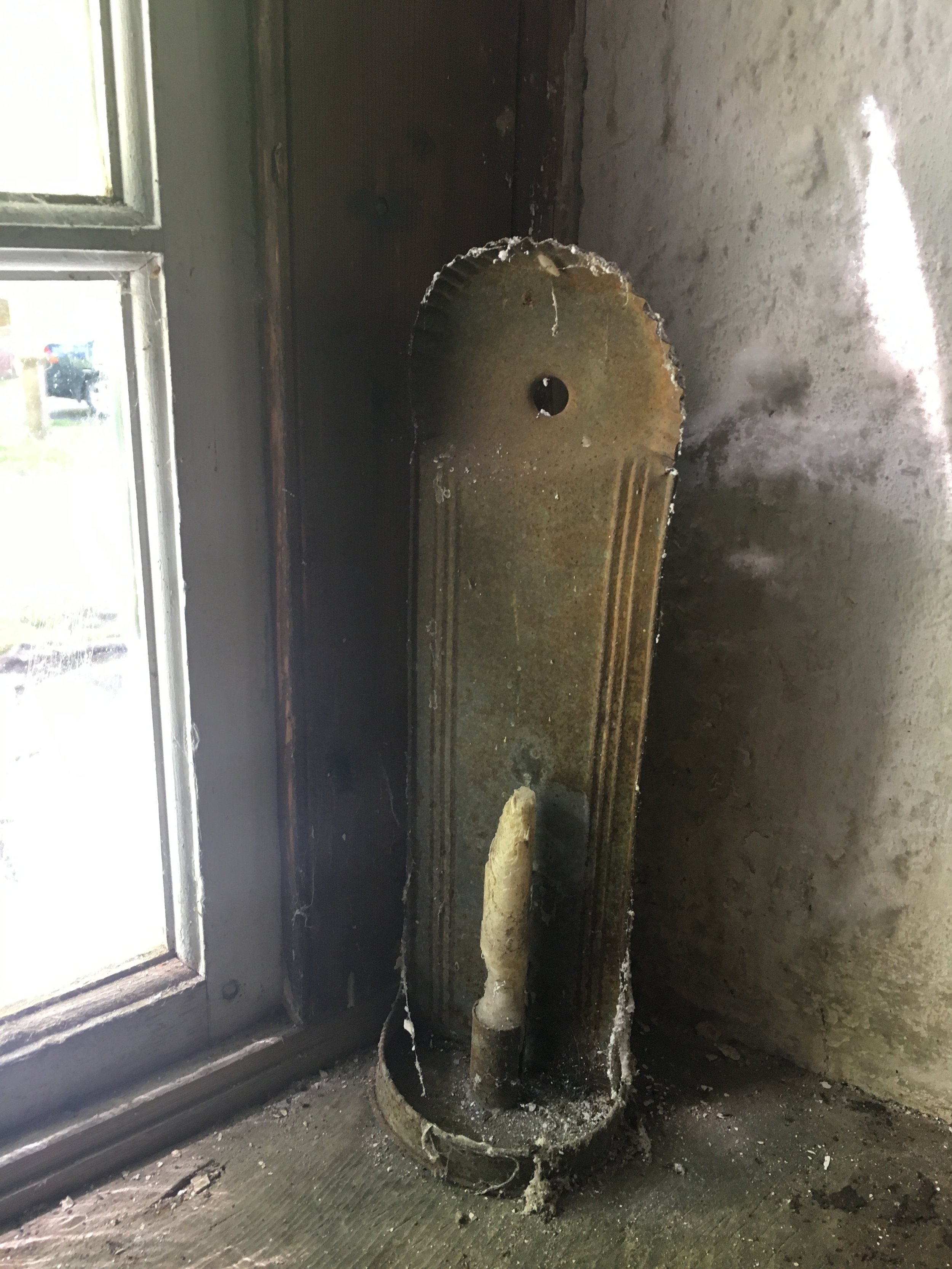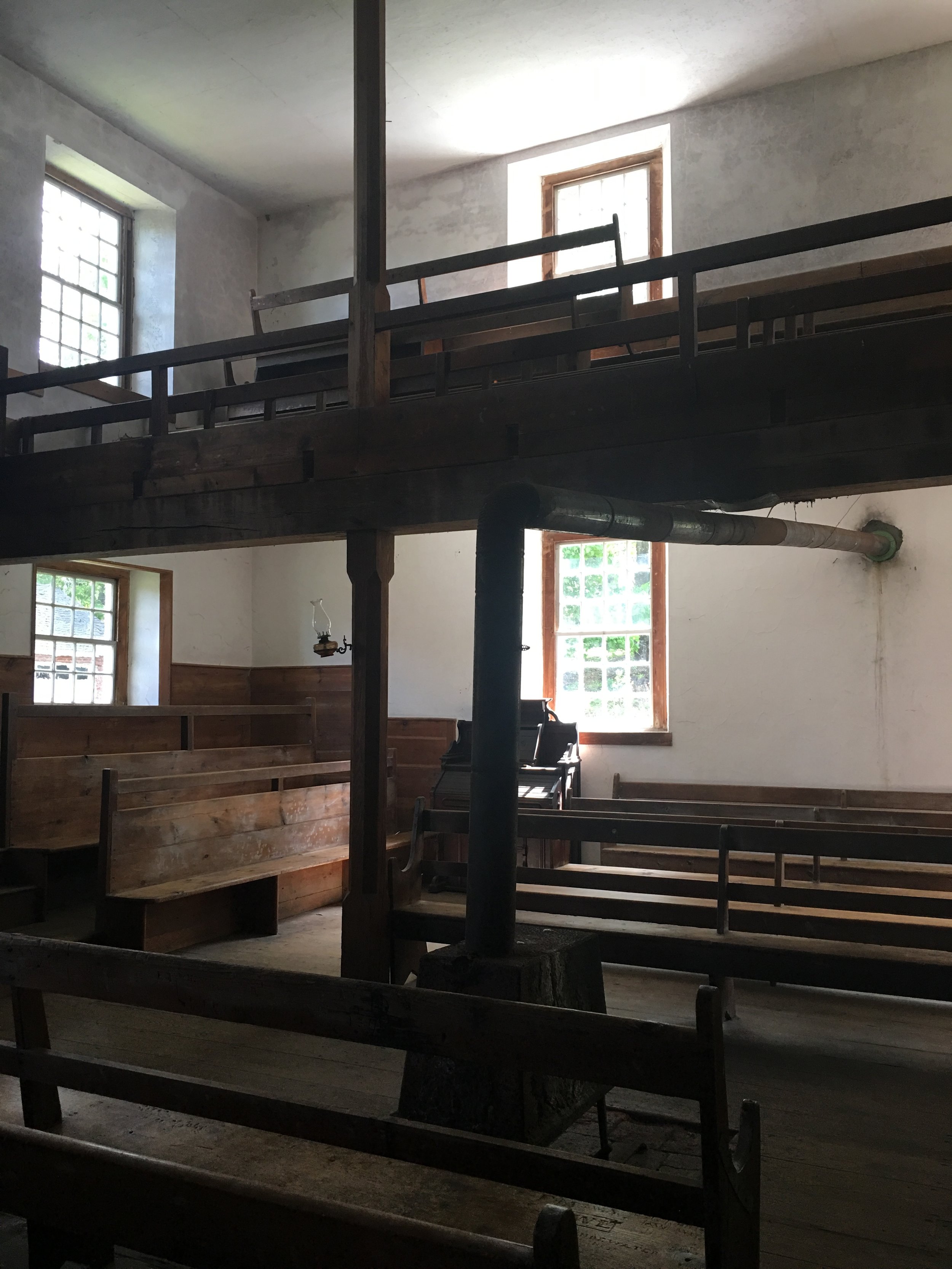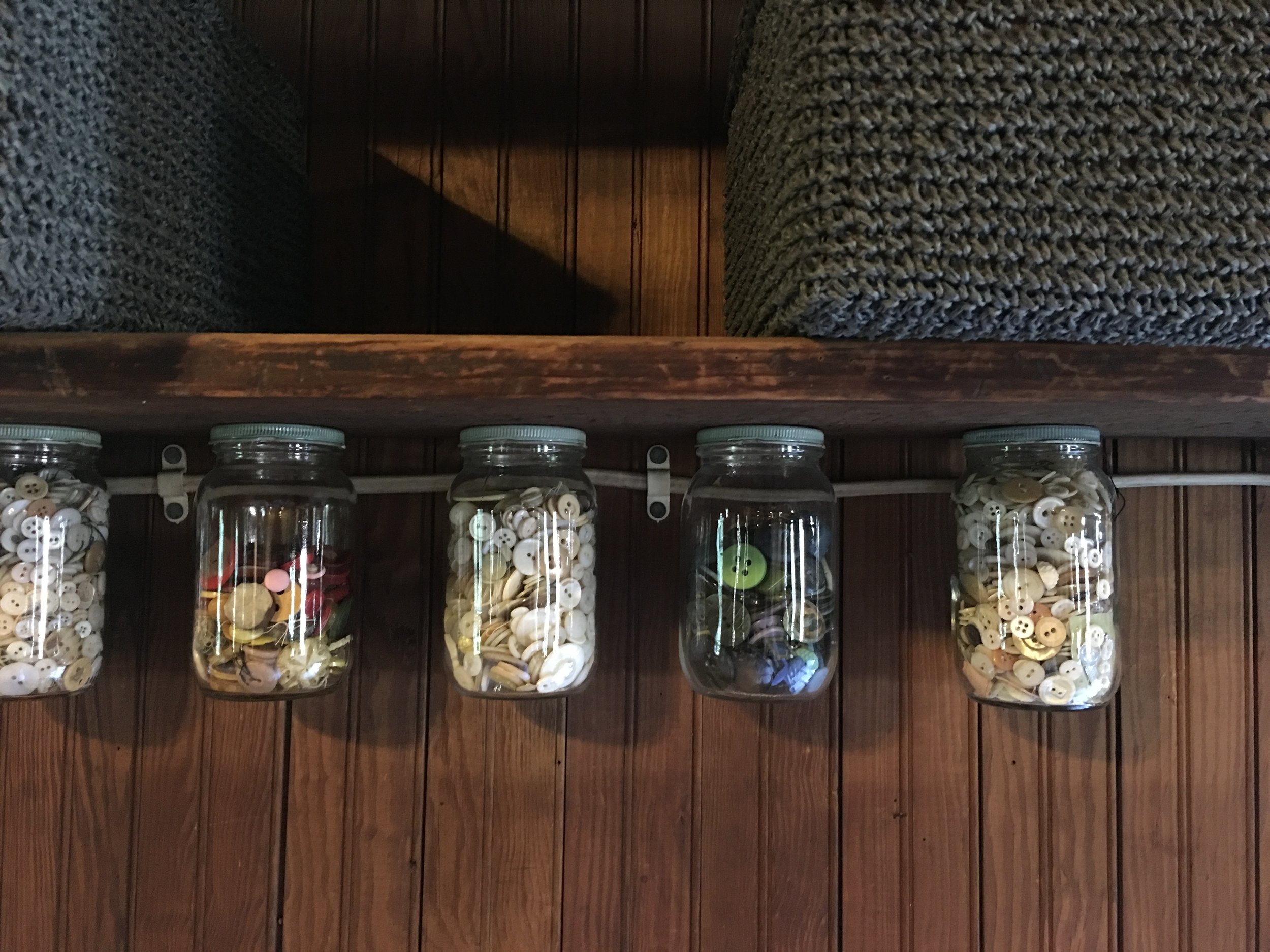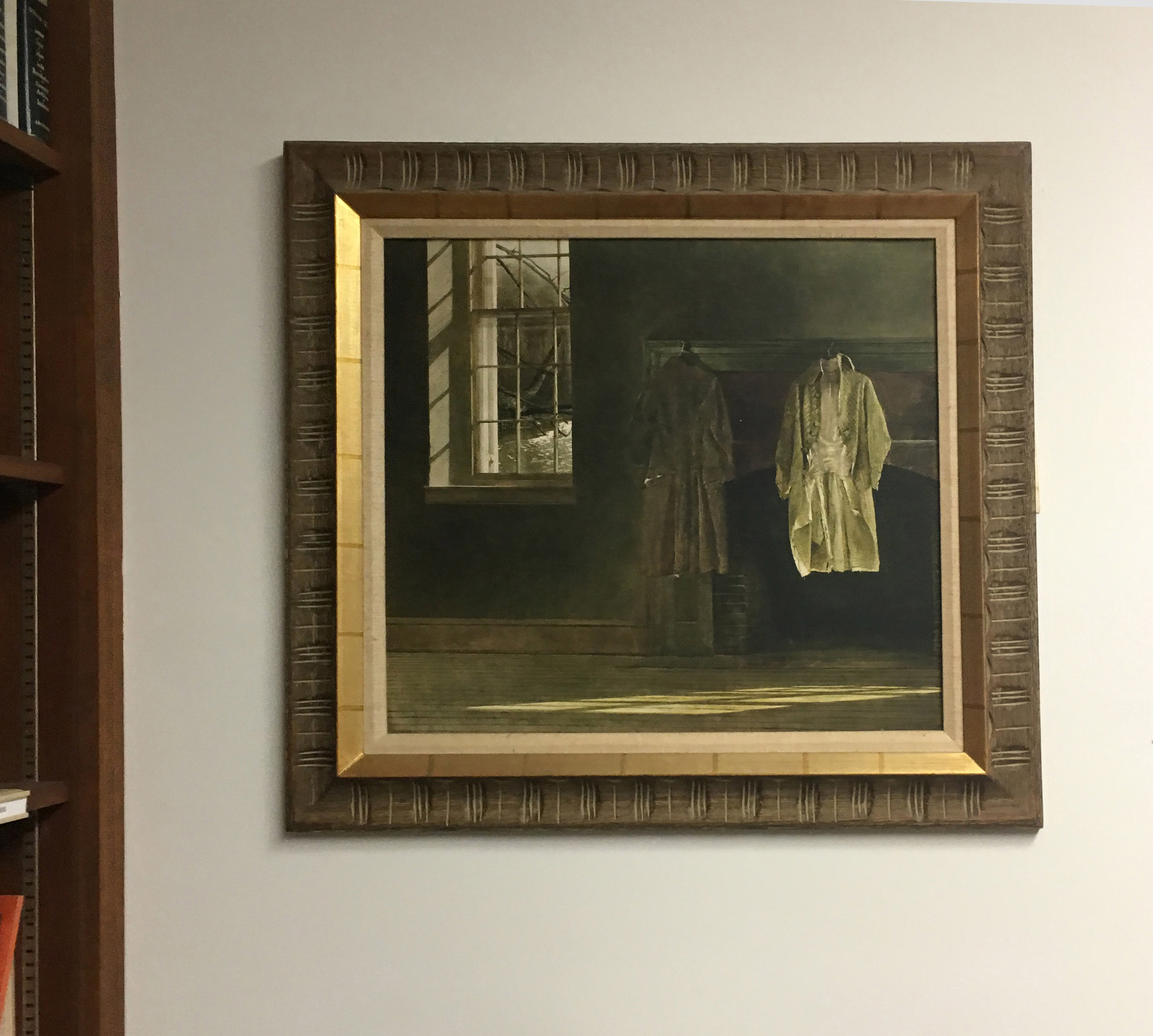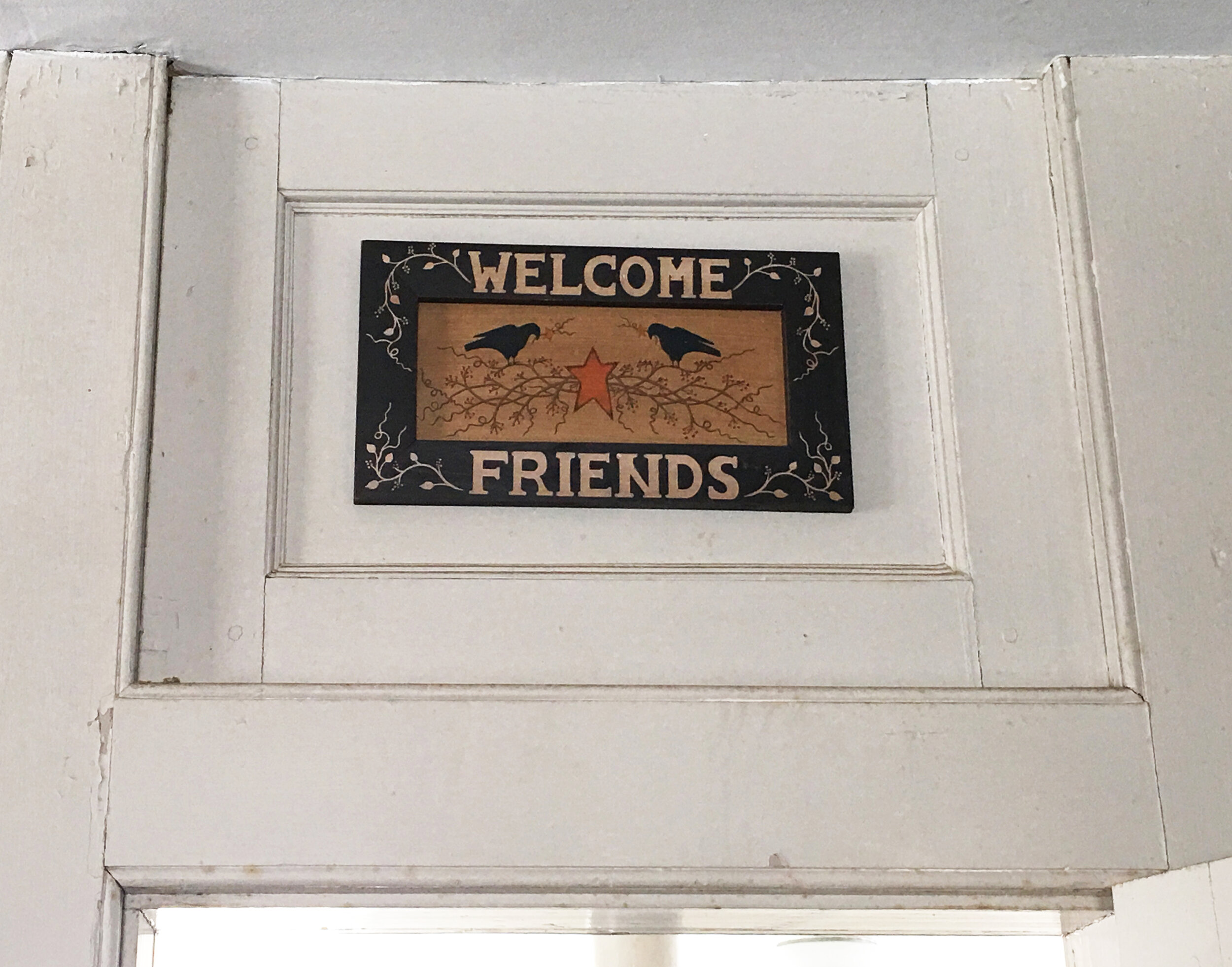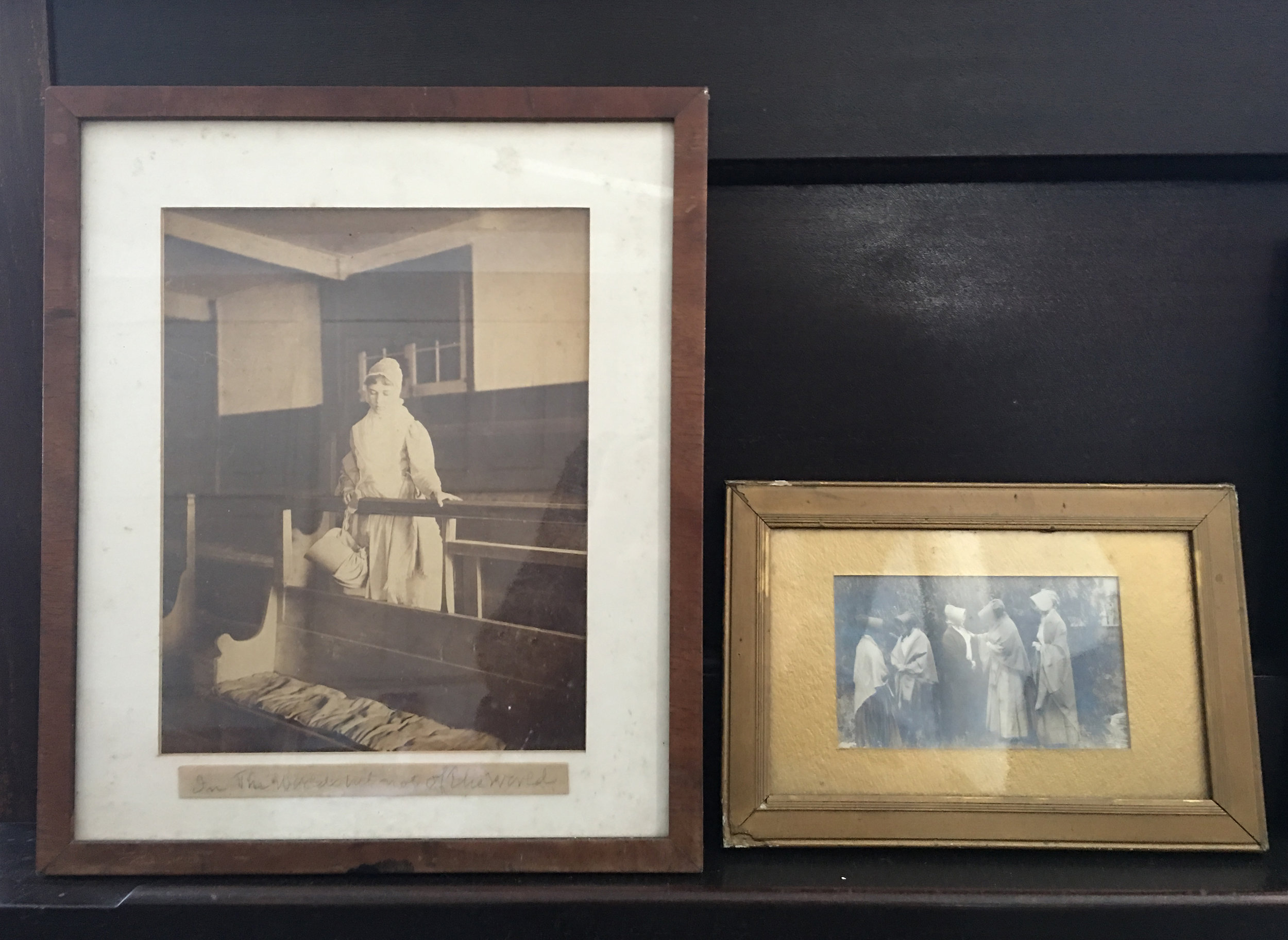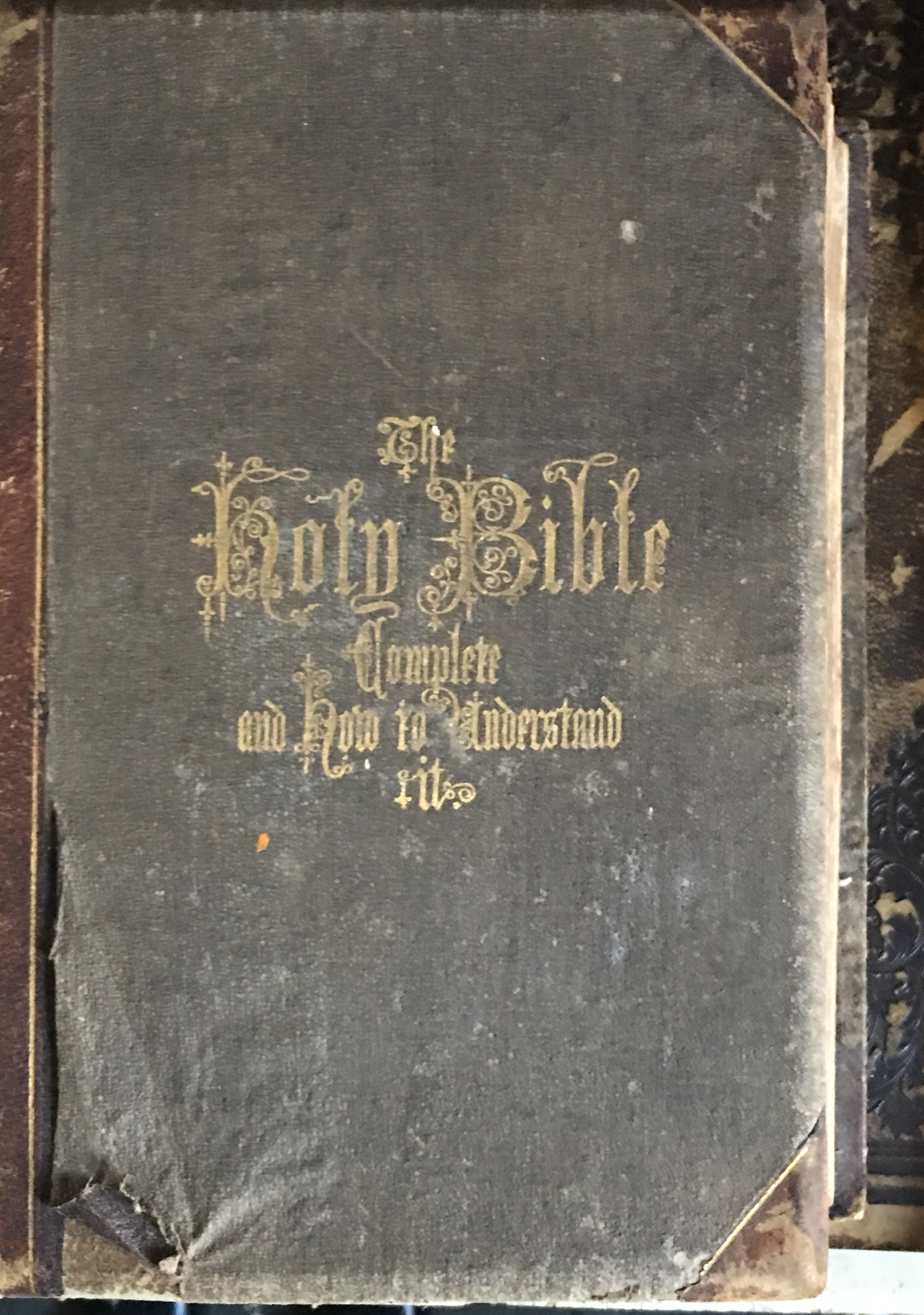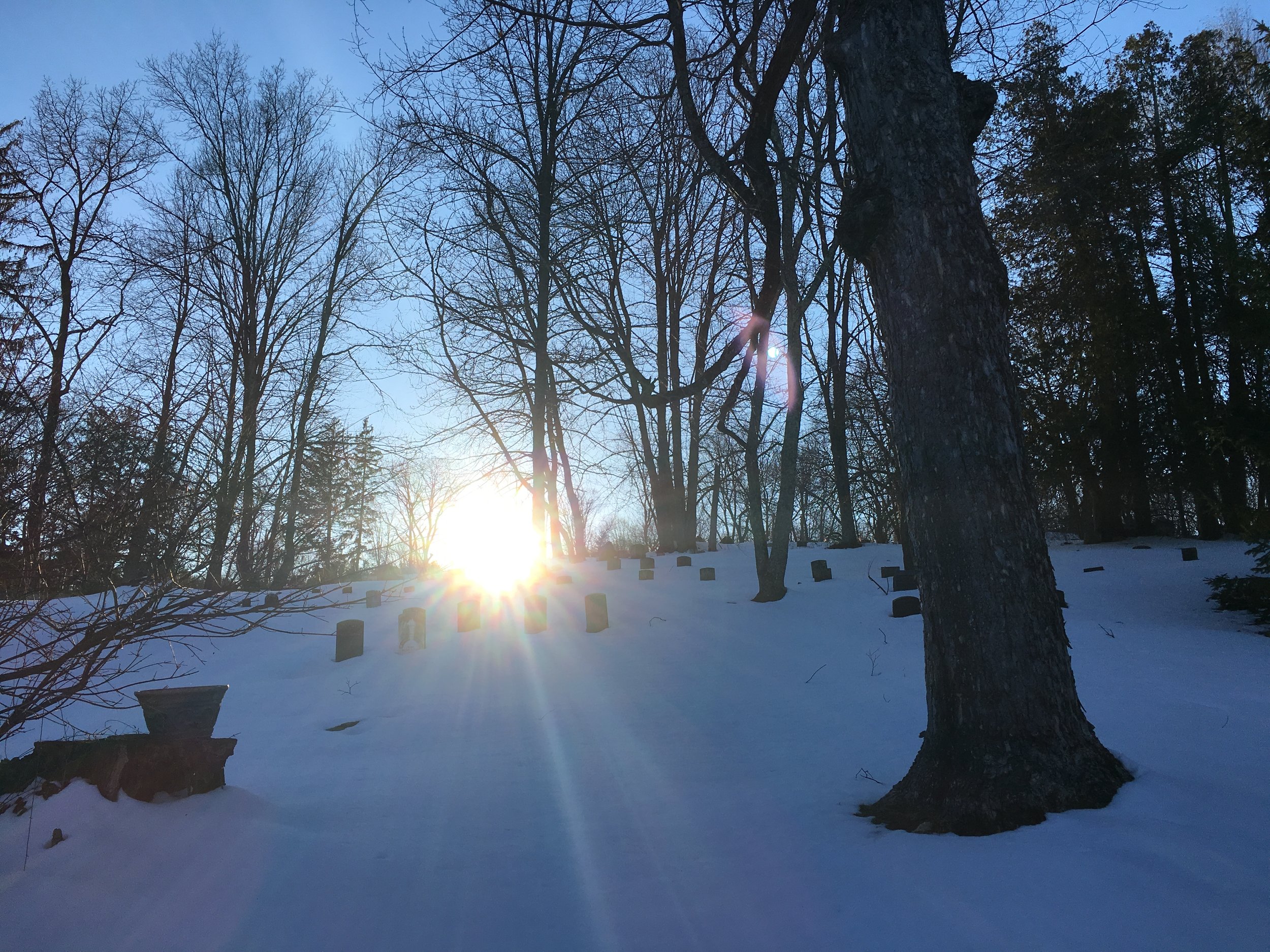"The Lord taught me to be faithful, in all things, and to act faithfully two ways; viz., inwardly to God, and outwardly to man." ~George Fox
Friends (Quaker) Meeting Houses are architectural gems standing exactly as built centuries ago: many still without heat, electricity or plumbing. Their hand hewn beams, columns and wooden pegged benches impress with the simple beauty that can only be found in the handmade. As early graffiti, names and dates are sometimes carved into benches. Candles stand in holders looking like they have not been lit for eons.
What were these places used for and who inhabits them now? Are they edifices frozen in time or places that continue to embody a living movement?
equality for all people: slaves, women, prisoner reform
The Quaker or Friends's religion is based upon the revelations of an English mystic, George Fox. He and his followers withstood imprisonment and public humiliation in England in order to uphold their beliefs. These 'heretic' beliefs were much feared by the Church of England in the Middle Ages. For many 'outcasts', it was an easy choice to move to the New World for its hope of religious freedom.
From the 17c to the present day Quakers, as they came to be called, have been at the forefront of a heroic chorus taking a stand for equality for all. Today what we now accept as a given, were rebellious and disruptive ideas to the landholding white males who formed the voting class in the early days of our Republic.
promotion of nonviolence + higher education
Friends or Quakers were civil rights activists for the abolilition of slavery and for reforming the harsh and punitive prison system of the 1600's and 1700's.
Some Quakers even argued that criminals were the creation of society itself so they set about pioneering what we know of today as restorative justice.
Quakers historically defended woman's rights in and out of the home. Strong proponents of education for all, they were responsible for founding outstanding college and university programs in this country. Their stance on non-violence as the only way to resolve conflict gained traction during the heyday of Vietnam War protests.
A group of people who are civic minded and inclusive of others.
Because of their innate humility they were the fore-settlers, literally laying the groundwork for families of European descent to settle the wilderness then inhabited solely by Native Americans. These Friends could be trusted to be fair and keep their word in negotiations. They became the peacemakers, working out treaties to finding solutions amongst parties with differing interests. Because of this ability William Penn, a Quaker, is the namesake of the state of Pennsylvania.
They live simple lives with the absence of excess - a refreshing thought in a society that seems to thrive on it. After the American Revolution some Quakers, who because of their religious beliefs did not participate in armed conflict, had their vast tracks of lands confiscated by Colonies on their way to becoming States. In many of these places still stand the Meetings for Worship they built during colonial times. They exist in regions where Quakers were not expelled or put to death by others who embraced a more rigid, Puritanical thought - as was the case in certain parts of Massachusetts.
Mary Dyer, a Quaker, hanged on Boston Common for her religious belief
Over the last couple of years I've had the pleasure of being invited to visit some of these older buildings in the Northeast. An active meetinghouse in Flushing, Queens dates back to the 1600's surrounded by burial grounds and a parking area. It sits as a tranquil oasis in a sea of modern day screeching, claustrophobic urban intensity. Other edifices in more rural areas are situated on the side of moving streams with adjacent sheds that would have been used for waiting carriages, horses and their hay. These sheds now serve as storage bins for wood that heats winter stoves inside the Meetinghouse - their only source of winter warmth. Attached to some sites are burial grounds which until the 1800's bore no gravestones or markers. Was this a statement about the inconsequentiality of Death to 'a' Life?
Arthur Washburn, a former teacher at Oakwood Preparatory School where I spent my last year of high school recollects from his childhood of going to Meeting, "I remember the pot-belly stove, used to heat the place. On Sundays we would go early and the "men" would start up the stove and someone would wind the clock, all in time for meeting. I clearly remember before the addition was put on in 1960. My mother's cousin Gardner Angell (from Scarsdale Meeting) was the architect. That gave us running water, and the heating followed. I seem to recall there was a pump out back and water was drawn from it, though I don't recall how it was heated for dishwashing, when we had pot luck dinners."
Today as then, children's activities are housed in on-site nursery schools. They perform a weekday role in many of these Meetinghouses that would otherwise rest idle during that time. After Sunday Meeting, monthly business meetings are conducted. At these inclusive, informal welcoming get-togethers after Meetings, someone is all too happy to show an interested party (me!) other parts of the building - an older Meetinghouses, once divided, now idle. An attic that stores relics from a bygone era or objects carefully preserved around the building - a painting, bonnet, books, buttons, or a bible who's pages have been left unturned.
The emphasis of these Meetings do not concentrate on teachings from the bible, as might have been in the past, but for an individual to sit in silence as a way to get in touch with the Inner Self. Then if someone is moved to share their insight during the latter part of Meeting, they do so as a means to enrich the understanding of all present.
Walt Whitman, who was raised by parents inspired by Quaker thought, wrote:
"George Fox stands for something too—a thought—the thought that wakes in silent hours—perhaps the deepest, most eternal thought latent in the human soul. This is the thought of God, merged in the thoughts of moral right and the immortality of identity. Great, great is this thought—aye, greater than all else."




